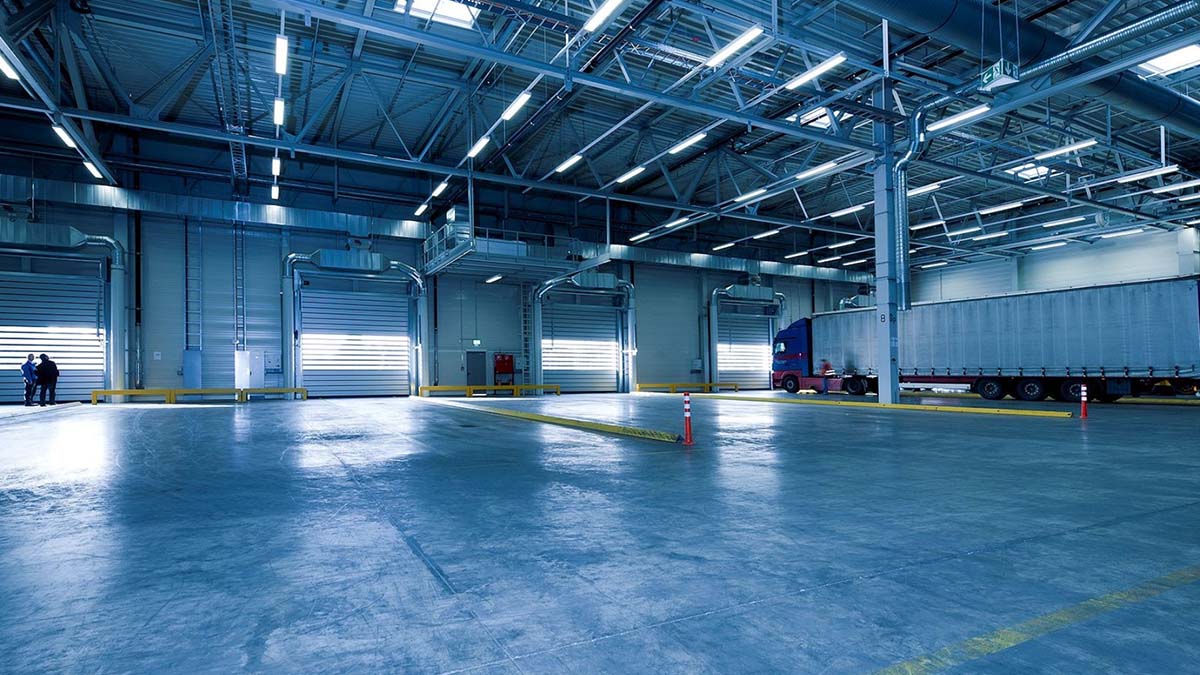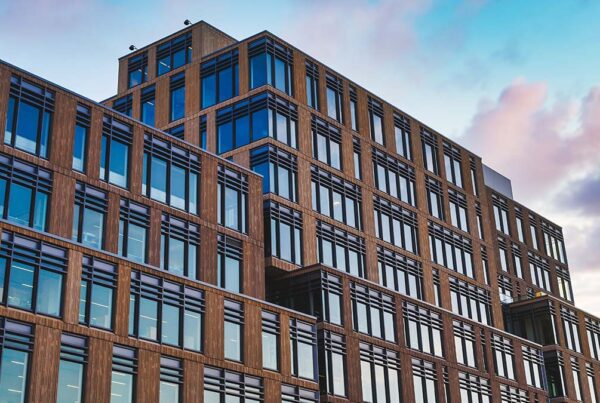
Industrial real estate is used by businesses to research, develop, manufacture, store, or distribute goods and products.
While industrial real estate properties usually don’t look as glamorous or aesthetically pleasing as other types of real estate, it is vitally important to our global economy because it supports all stages of the supply chain.
Due to more intense infrastructure needs, less appealing aesthetics, and different zoning needs, most cities designate specific areas to industrial real estate so that the activities of these businesses don’t disturb other enterprises or residences.
What are the types of industrial real estate?
There are ten types of industrial real estate. Each type of industrial real estate has a unique use case,, so it’s essential to understand the differences.
1) Industrial Land
Industrial land is land zoned for industrial use without any permanent structures on the premises. Industrial land may be used for things like parking equipment or storing gravel.
Industrial land can also be used for “build to suit.” A build to suit agreement is when a landowner pays to construct a structure according to a future tenant’s specifications and then leases the property to the tenant when the building is complete.
Build to suit deals can be excellent opportunities for industrial landowners because you don’t have to worry about initial vacancy rates given you have a tenant set to occupy the property upon completion.
2) Bulk Warehouse
Bulk warehouse real estate is usually the largest type of industrial property (typically 50,000-1,000,000+ square feet).
Bulk warehouse properties usually support the regional distribution of products and thus require large indoor space for bulk storage and easy accessibility for trains, trucks, and delivery vehicles.
3) Flex Warehouse
Flex warehouse real estate is a hybrid property that includes a combination of warehouse space and office real estate or retail real estate. Because these properties are “flexible” by design, they can accommodate a wide range of businesses and uses.
4) Heavy Manufacturing
Heavy manufacturing real estate house specialized equipment and machinery to produce a wide variety of goods, products, and materials.
Heavy manufacturing properties are usually large, capital-intensive properties that are often isolated within the most industrialized areas of a city due to the heavy machinery, chemicals, and power they use.
Tenants that occupy these sites tend to sign long leases because it’s extremely inconvenient to relocate such large, specialized operations.
5) Light Manufacturing
Light manufacturing real estate is typically used to assemble, store, and ship products.
The real estate brokerage company CBRE defines these properties as having smaller footprints with less than 120,000 square feet. Light manufacturing properties often include some type of attached office space as well.
6) Food Manufacturing
Food manufacturing real estate consists of facilities that grow, make, and process food and beverages.
Food manufacturing properties can include everything from growing facilities that produce medical-use cannabis for the healthcare industry to manufacturing plants that make processed foods such as chips or ice cream.
7) Cold Storage
Cold storage and refrigeration warehousing is used to store and distribute food and beverage products to restaurants and grocery stores.
Cold storage properties are often used as distribution centers for chain groceries and require easy transportation access as well as unique HVAC systems that can maintain temperatures between 34 degrees to -10 degrees.
Like heavy manufacturing sites, these spaces are built out with intensive capital to serve a unique purpose and tenant retention can be very high due to the cost of moving such an operation.
8) Industrial Showroom
Industrial showroom real estate is a hybrid property that contains sections of retail and warehousing so that manufacturers can create, showcase, sell, and distribute goods from the same location.
Industrial showrooms are usually found along highways for high visibility and easy distribution. These properties are attractive to small custom goods manufacturers (such as furniture makers) because they can save costs by bundling all business components under one roof.
9) Research And Development
Research and Development real estate is a hybrid property that contains a mix of office, warehouse, and manufacturing space.
Like most industrial real estate, research and development properties can range from a basic build to accommodate a wide variety of tenants or highly specialized to support the needs of a specific tenant. Businesses in the electronics, chemicals, biotechnology, and drug development industries are often tenants of research and development properties.
10) Data Centers
Data Centers are properties equipped with computer systems and networking equipment to store, process, distribute, or allow access to large amounts of digital data.
Data centers support essential internet functions that support websites, applications, e-mail, instant messaging services, cloud storage, e-commerce transactions, and more.
Data centers require significant amounts of power to operate, so they must be close to major communication lines and have access to a huge power supply.
What Are the Different Classes of Industrial Real Estate?
Like other commercial real estate, industrial real estate is categorized into three different classes of industrial buildings, including Class A, B, and C, depending on their age and quality.
What is Class A Industrial Space?
Class A Industrial Real Estate represents the newest, highest-quality industrial properties on the market boasting the best amenities in prime locations.
Class A industrial properties usually have high-income tenants with low vacancy rates. As a result, Class A assets are often priced high with lower CAP rates but tend to carry less risk to investors because the tenants typically stay for long periods of time.
What is Class B Industrial Space?
Class B Industrial Real Estate represents buildings without all of the amenities and bells and whistles of Class A industrial properties. Class B assets can be new buildings, or slightly older buildings, that are well-maintained and in good locations but simply aren’t the same caliber as Class A assets.
Investors often view Class B industrial properties as “value-add opportunities” because they can sometimes be improved to Class A properties with renovations and improvements.
What is Class C Industrial Space?
Class C Industrial Real Estate represents buildings that are typically 20+ years old, have deferred maintenance, and are often located in less-desirable areas.
Investors often view Class C industrial properties as significant “value-add opportunities” if they’re in a good or growing location because they can be converted into higher value assets with significant renovations and updates.
Industrial Real Estate 101
Learning about industrial properties can be overwhelming at first, but you will become more comfortable with it over time as you study, analyze deals, and invest. Here’s an overview of industrial real estate:
- Industrial real estate is used by businesses to research, develop, manufacture, store, or distribute goods and products.
- Investors often find industrial real estate appealing because the tenants often sign long-term leases.
- Industrial properties can be categorized using two elements:
- 1) Property Type
- Industrial Land
- Bulk Warehouse
- Flex Warehouse
- Heavy Manufacturing
- Light Manufacturing
- Food Manufacturing
- Cold Storage
- Industrial Showroom
- Research and Development
- Data Center
- 2) Asset Class
- Class A Industrial
- Class B Industrial
- Class C Industrial
- 1) Property Type



